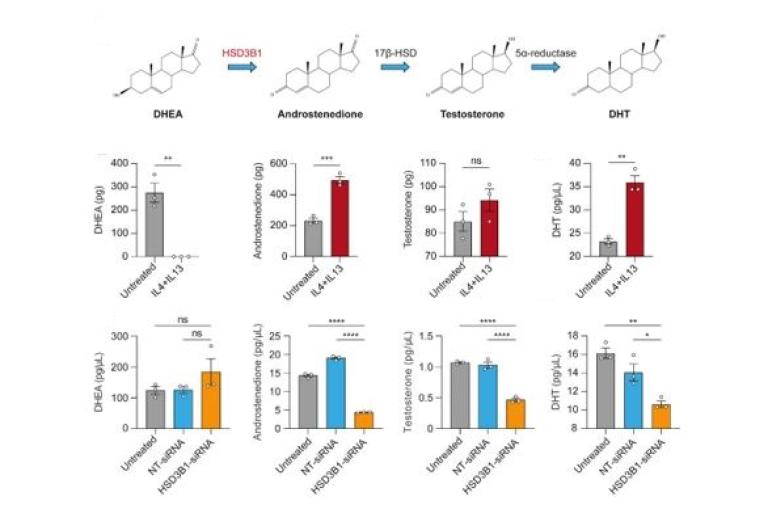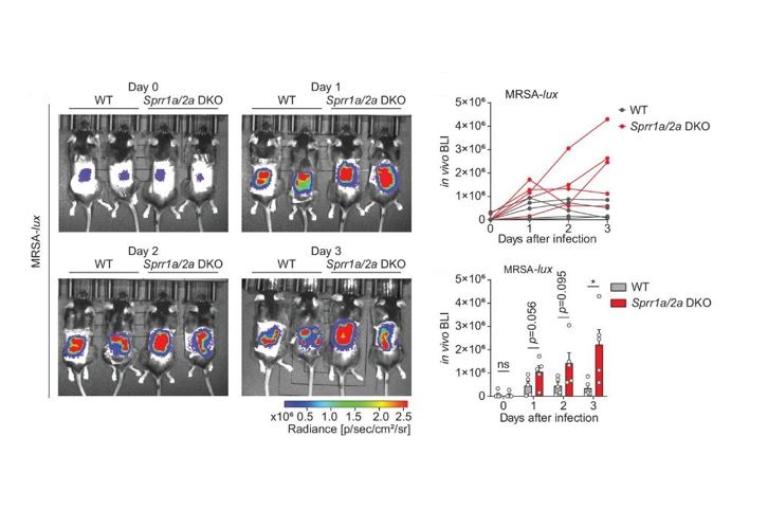The skin epithelium in host defense and immunity
The Harris-Tryon lab is developing an understanding about how lipids, proteins, and small molecules derived from the skin epithelium contribute to skin immunity and host defense. We have shown that sex steroid hormone synthesis in the epithelium is regulated by the immune system and created an approach for quantifying sex steroid hormones in skin secretions. We have also shown how the skin epithelium responds to bacteria and how the loss of epithelial lipids impacts the microbiome. Together, these findings define the key role that sebaceous glands and keratinocytes play in microbial crosstalk at the skin surface.

Regulation of hormone synthesis in skin
We have shown that sex steroid hormone synthesis in the skin is regulated by the immune system. We aim to dissect mechanistically how skin derived androgens, such as testosterone, regulate the microbiota and the skin barrier. We have also created an approach for quantifying sex steroid hormones in tissues and secretions.

Characterization of Staphylococcus aureus pathogenesis
Our lab is dissecting drivers of microbial colonization at the skin surface. A key opportunistic pathogen at the skin interface is Staphylococcus aureus. We have defined novel ways in which small molecules secreted by the skin impact Staphylococcus aureus colonization. We are also partnering with collaborators at UT Southwestern and beyond to characterize novel virulence factors and metabolic pathways that regulated Staphylococcus aureus pathogenesis.
Characterization of novel antimicrobial proteins in skin
As a postdoctoral fellow, Dr. Harris-Tryon was immersed in the laboratory of Dr. Lora Hooper, an internationally recognized expert in the biological impacts of the microbiota and the characterization of antimicrobial proteins. The Harris-Tryon lab is interested in defining the antimicrobial capacity of skin derived molecules and has characterized the bactericidal function of SPRR1 and SPRR2 in the skin and how these proteins are regulated by the microbiota.